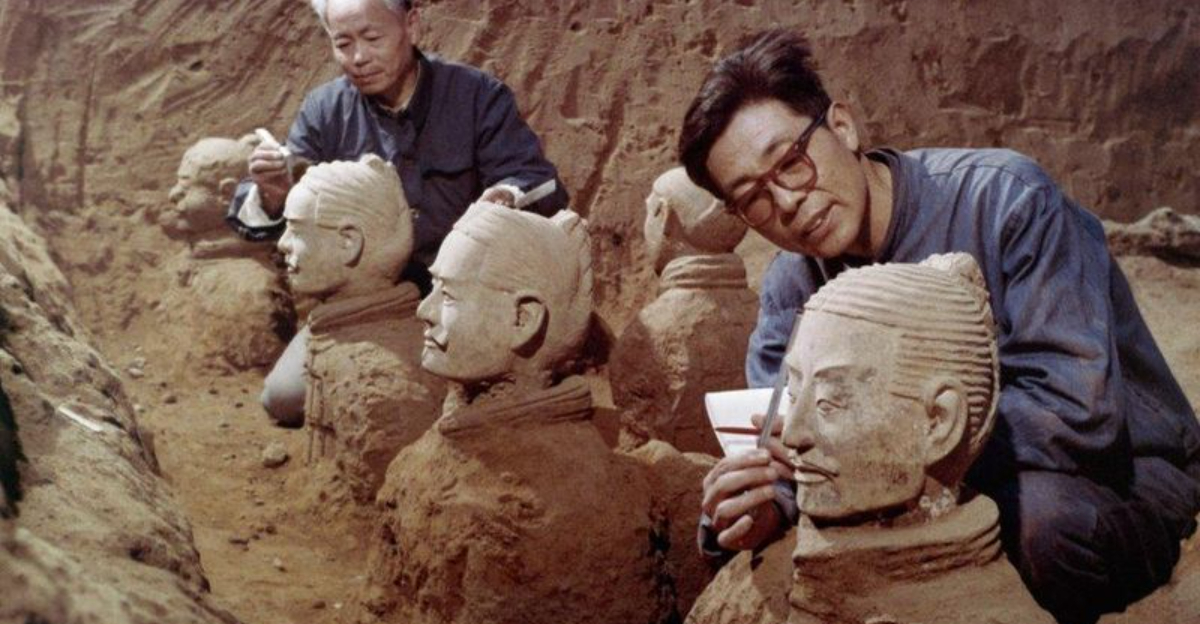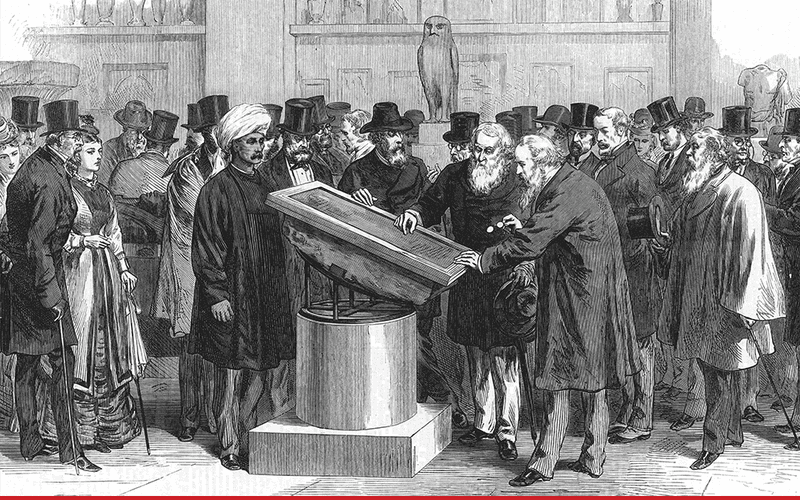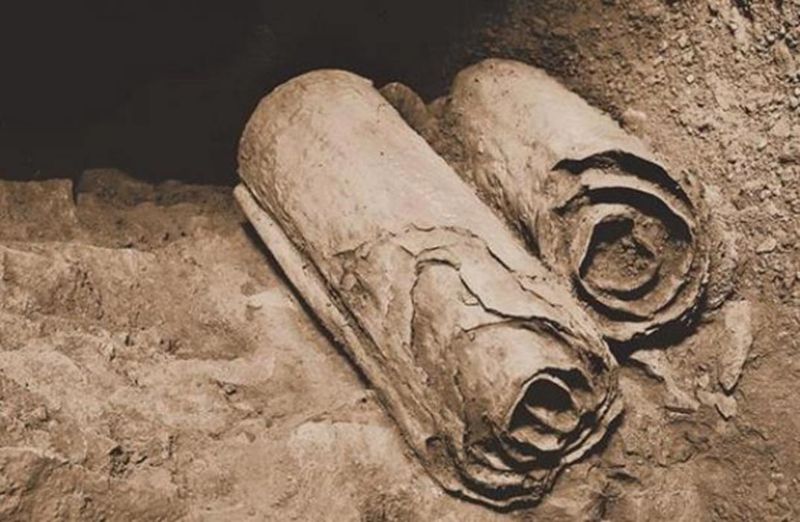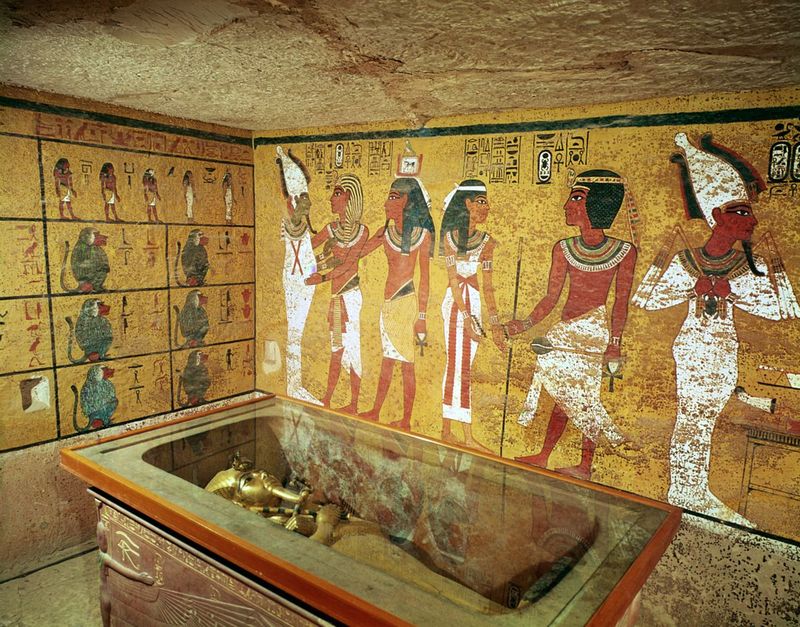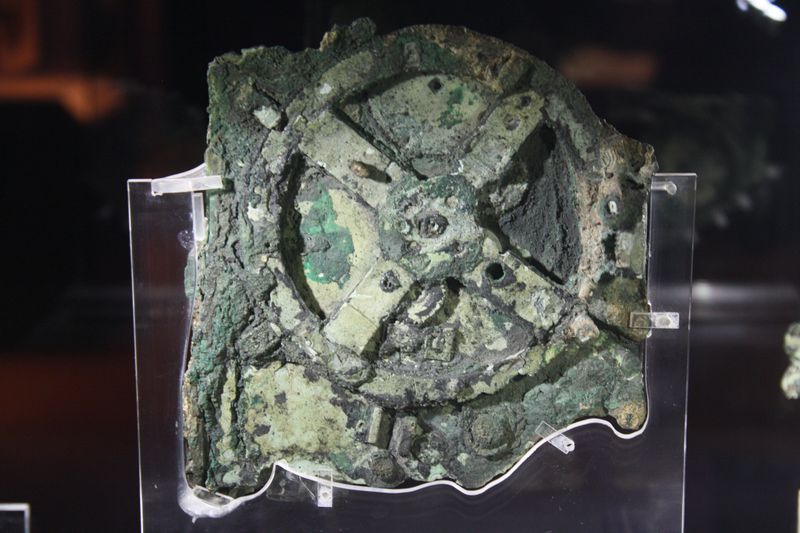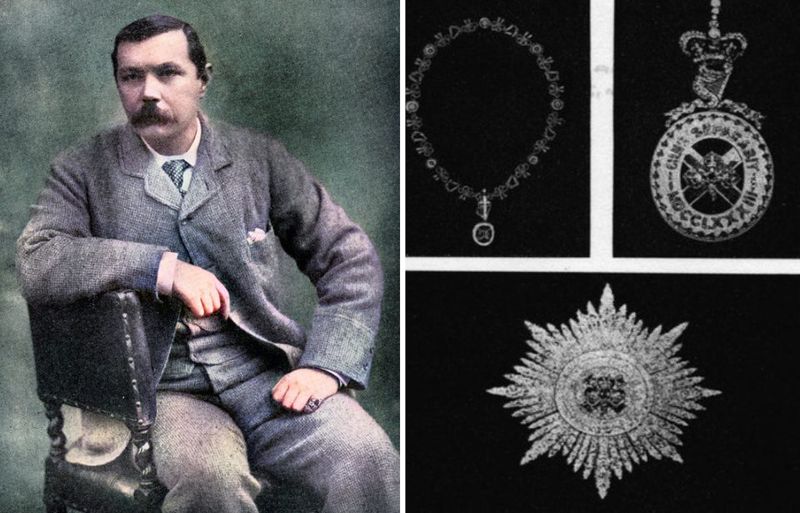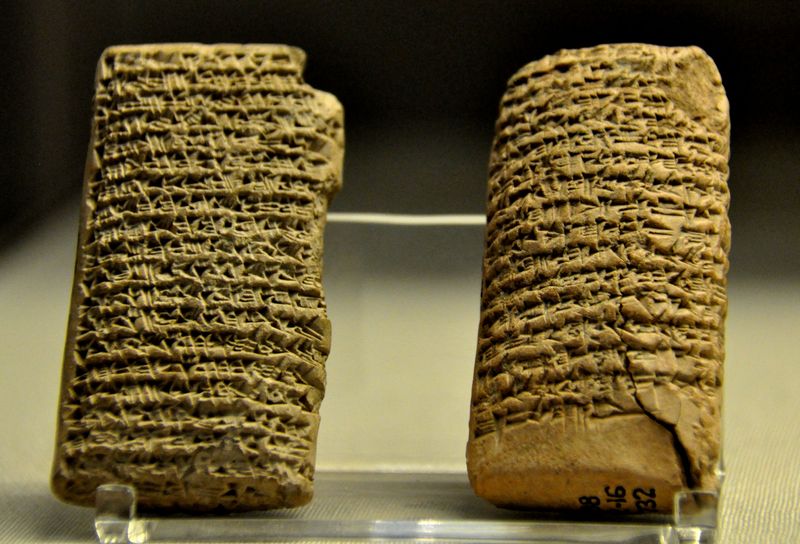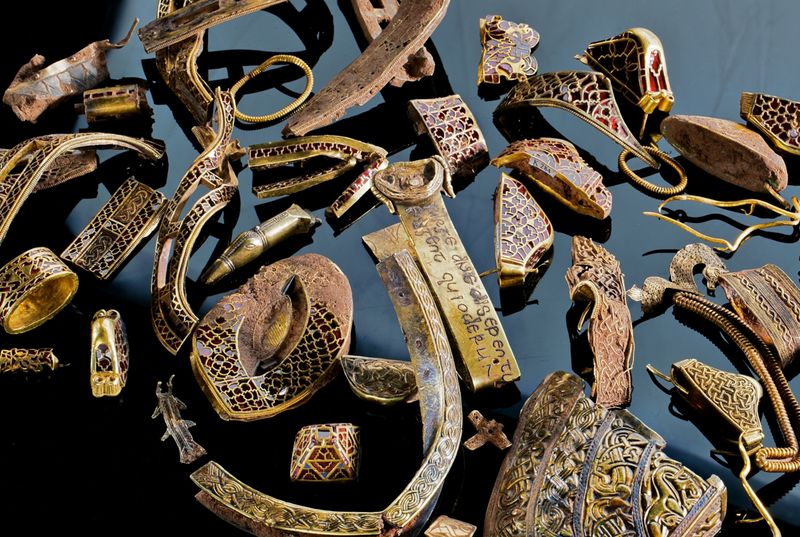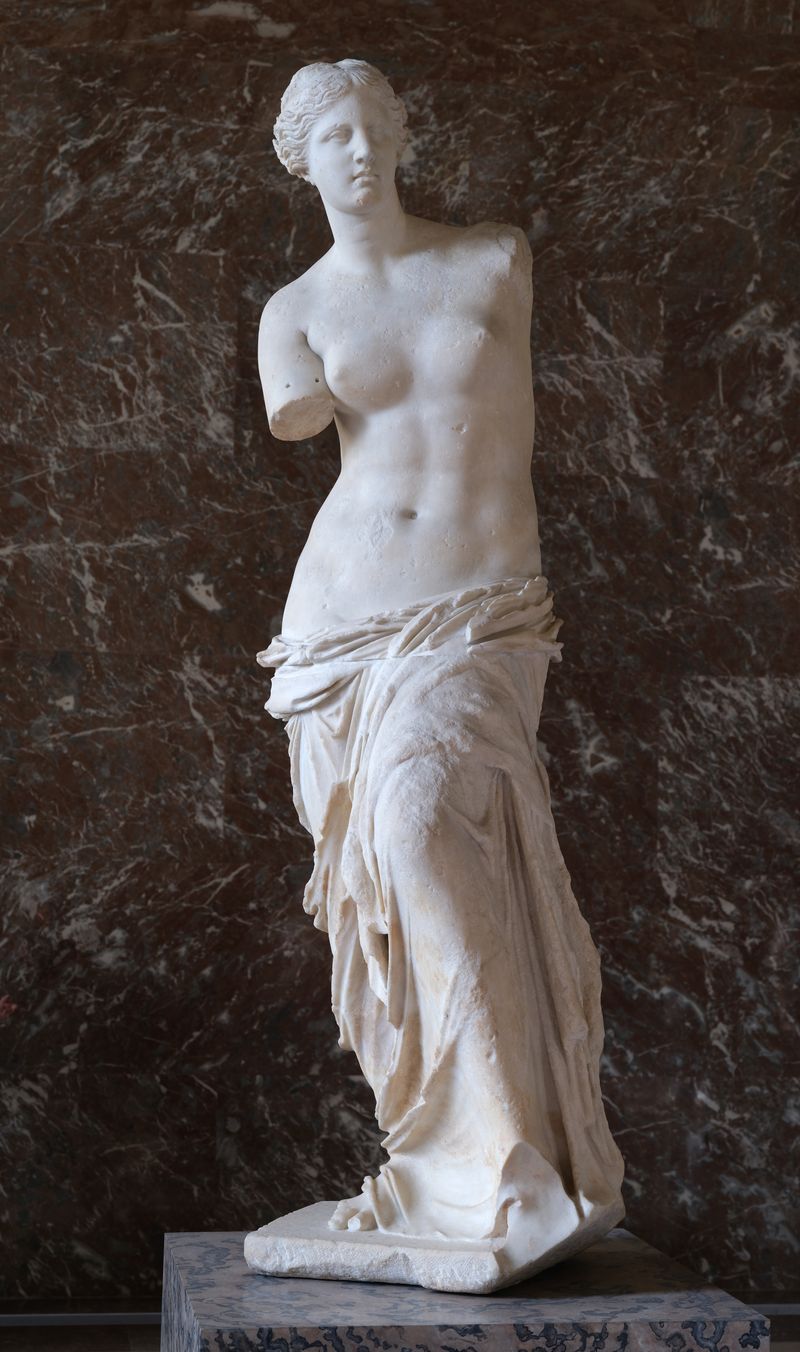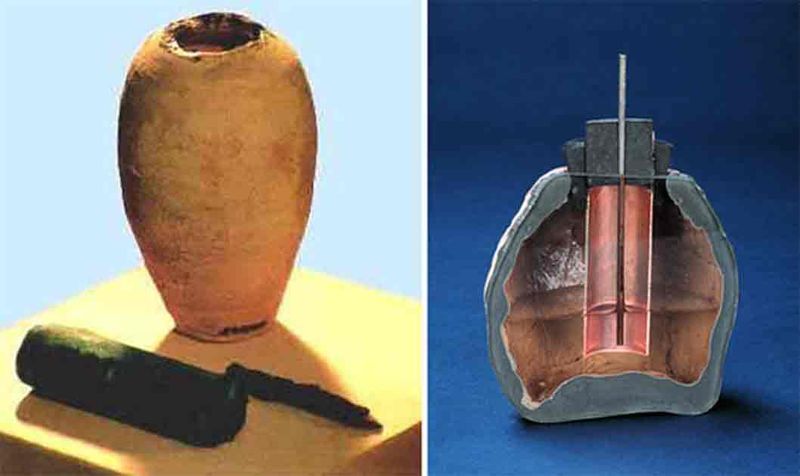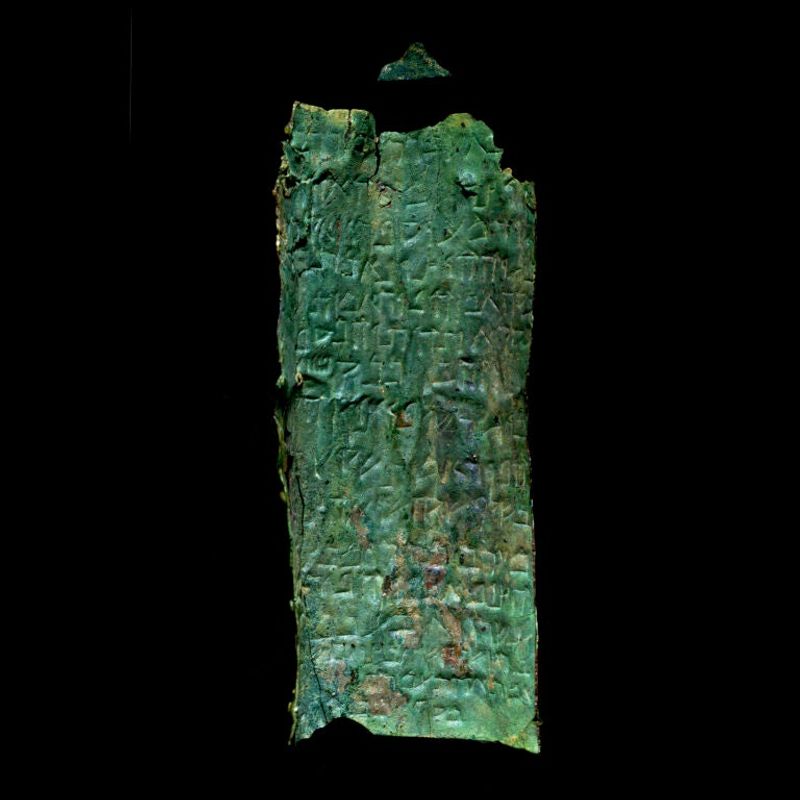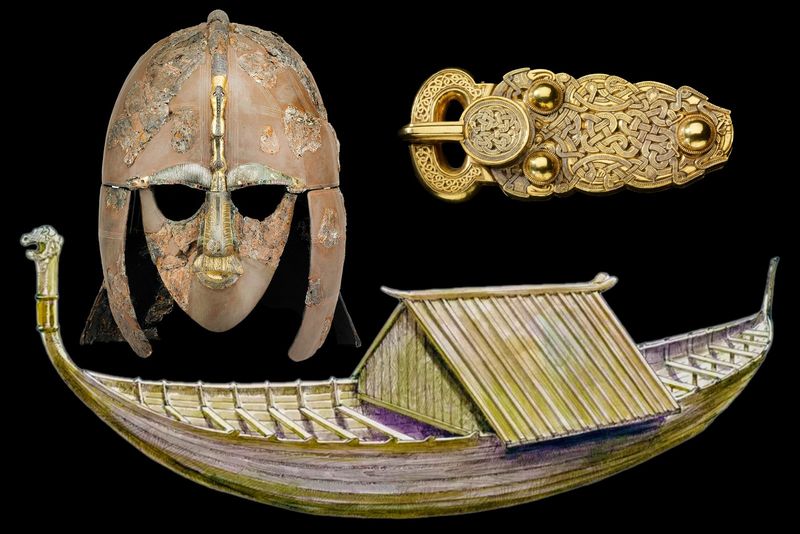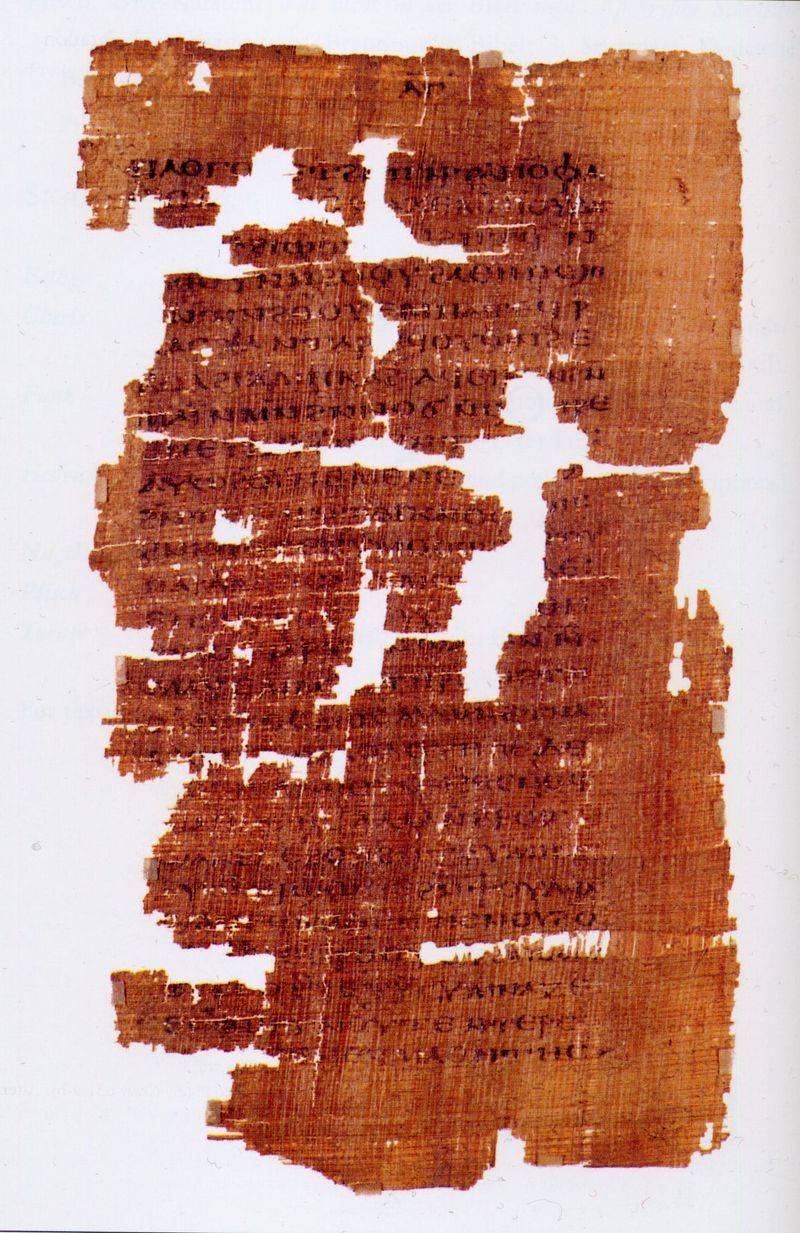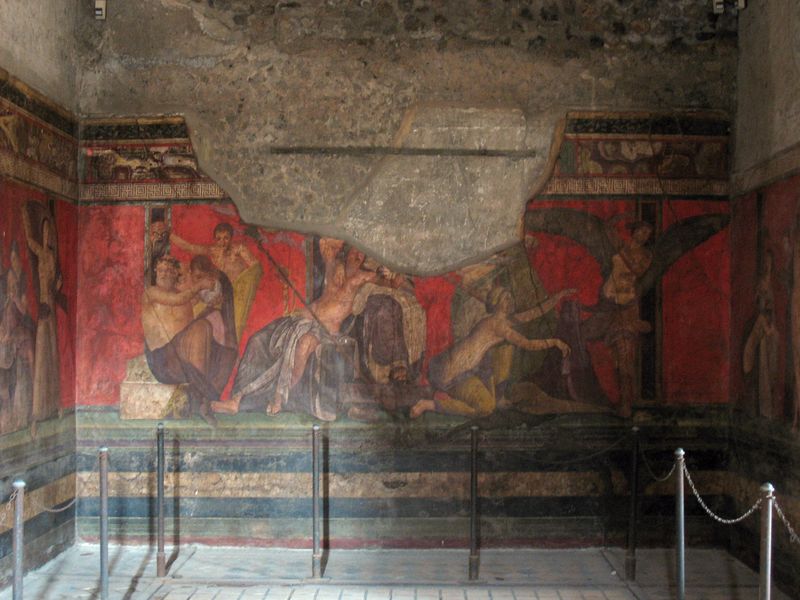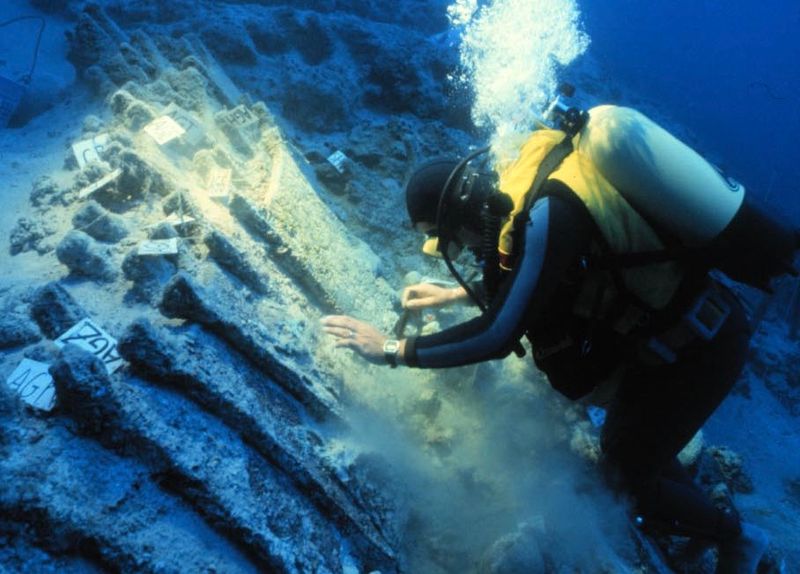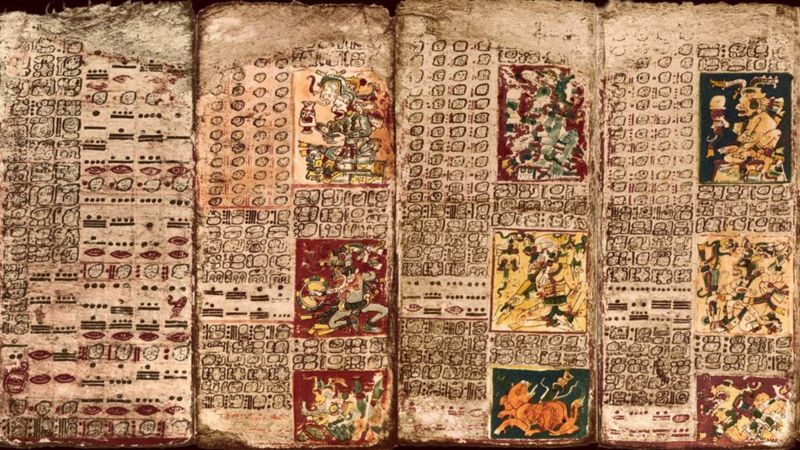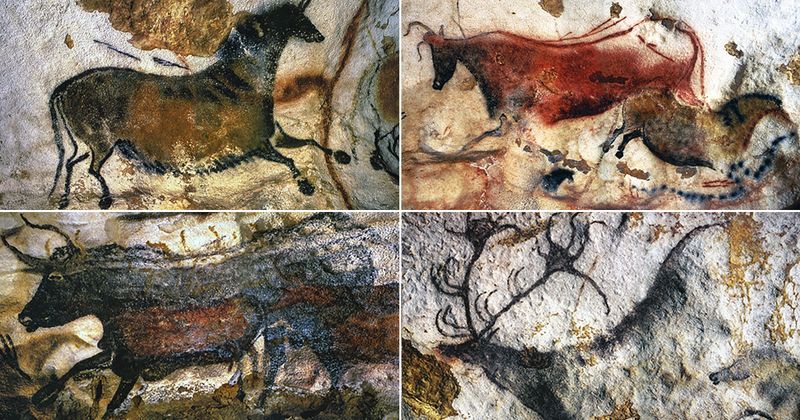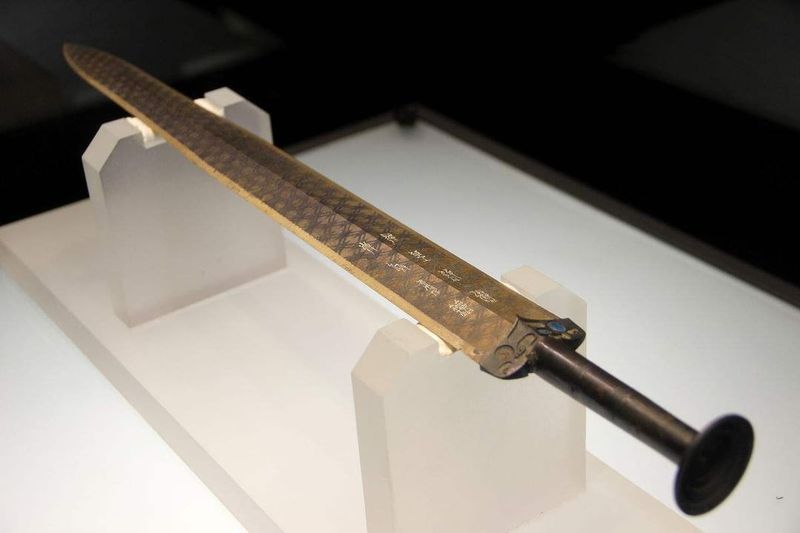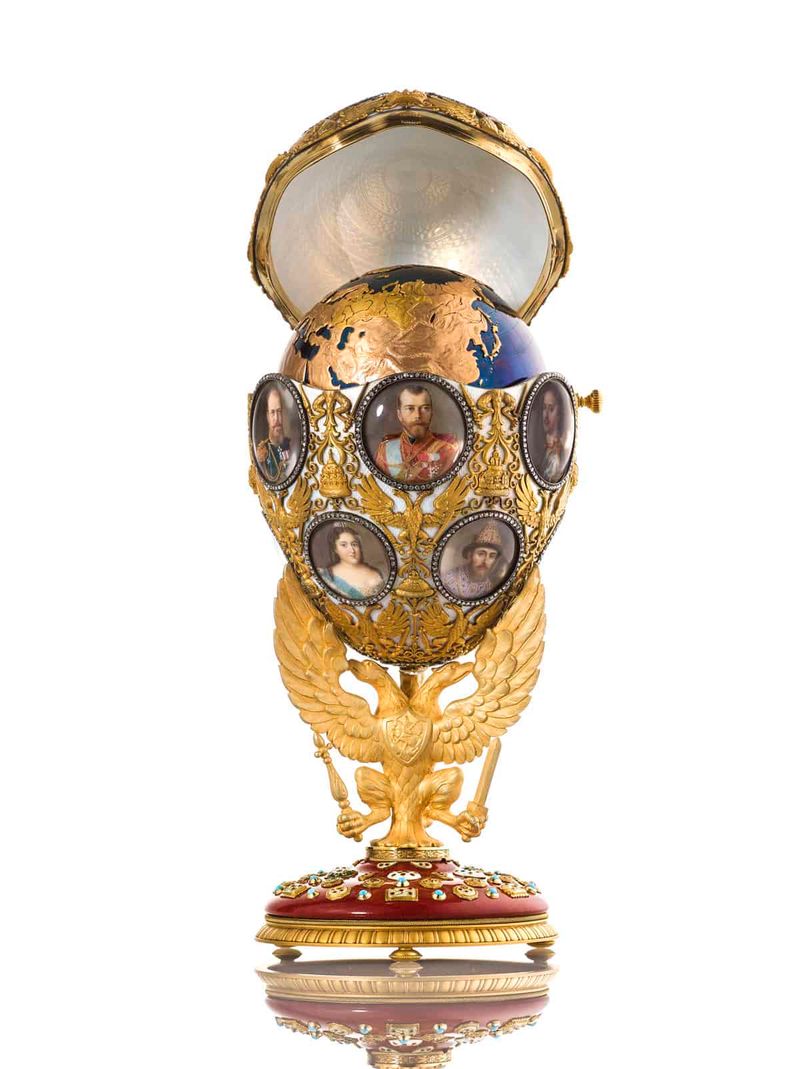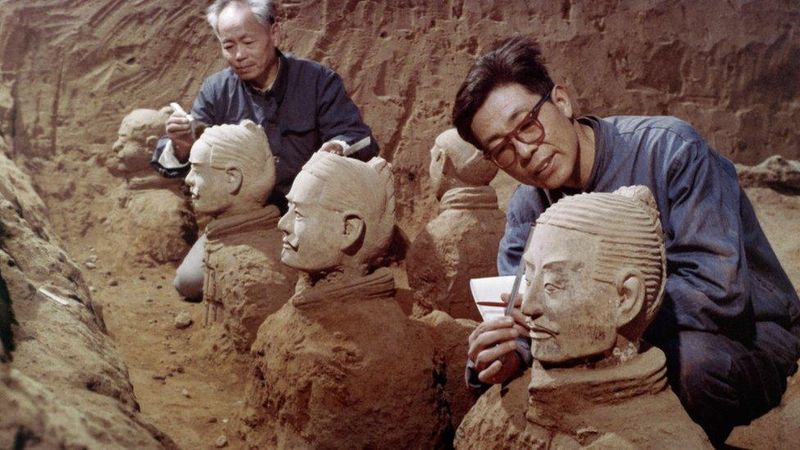Throughout history, many valuable artifacts have been lost to time, only to be rediscovered, often by chance. These items offer a fascinating glimpse into past civilizations and cultures. In this blog post, we explore 20 such artifacts that were once lost and then unexpectedly found, revealing their stories and significance.
1. The Rosetta Stone
Unearthed by French soldiers in 1799, the Rosetta Stone became a key to unlocking the secrets of ancient Egyptian hieroglyphs. This finely carved slab, etched with scripts in three languages, was discovered in the sands of Egypt.
The Rosetta Stone’s inscriptions allowed scholars to decipher previously indecipherable texts and understand a civilization long hidden in mystery. Its rediscovery was like finding a lost key to a vast treasure trove of knowledge.
2. The Dead Sea Scrolls
Hidden away in desert caves, the Dead Sea Scrolls lay untouched for nearly two millennia until a young shepherd found them in 1947. These fragile scrolls, written in Hebrew, Aramaic, and Greek, contain some of the oldest known biblical texts.
The shepherd’s accidental discovery led to revelations about early Judaism and Christianity, offering insights that scholars only dreamed of before.
This find ignited a surge of archaeological exploration in the region, seeking more hidden treasures.
3. King Tutankhamun’s Tomb
The discovery of King Tutankhamun’s tomb in 1922 by Howard Carter was a sensational event that captured the world’s imagination. After years of searching, Carter uncovered the steps leading to the untouched burial site of the young pharaoh.
Inside lay a wealth of treasures, from the famous golden mask to ornate chariots and jewelry. The tomb’s opulence and the mystery surrounding Tutankhamun’s short reign fascinated both historians and the public.
This discovery brought to life the rich history of ancient Egypt in a way never seen before.
4. The Antikythera Mechanism
From the depths of the Aegean Sea, the Antikythera Mechanism emerged in 1901, a marvel of ancient engineering. Divers, searching a shipwreck near Antikythera, Greece, brought up this intricate device, often described as the world’s first computer.
Its bronze gears could predict astronomical positions and eclipses, showcasing Greek mastery of technology. The mystery of its origins and purpose continues to intrigue researchers.
As the divers surfaced, they held not just a piece of metal but a testament to human ingenuity, lost to the waves for over two millennia.
5. The Crown Jewels of Ireland
In 1907, the Crown Jewels of Ireland vanished from Dublin Castle, sparking intrigue and speculation that persists to this day. Though the jewels themselves remain lost, tantalizing clues and pieces of the puzzle have surfaced over the years.
These gems symbolized the Irish Order, and their theft highlighted vulnerabilities in security and fueled conspiracy theories involving high-profile figures. The mystery continues to captivate those fascinated by history’s unsolved mysteries.
The jewels, once a symbol of prestige, now serve as reminders of intrigue and the allure of the unknown.
6. The Library of Ashurbanipal Tablets
Once thought lost forever, the Library of Ashurbanipal’s cuneiform tablets were rediscovered in the ruins of Nineveh during 19th-century excavations. These tablets, inscribed with myths, knowledge, and laws, offer a peek into the ancient Assyrian empire.
The dusty, sun-baked ruins yielded a treasure trove of writings that scholars eagerly deciphered, revealing insights into the culture and achievements of a long-gone civilization.
These tablets are not just historical artifacts; they’re a bridge connecting us to the intellectual pursuits of the past.
7. The Staffordshire Hoard
In 2009, an amateur metal detectorist in England’s fields stumbled upon the largest hoard of Anglo-Saxon gold and silver ever found. The Staffordshire Hoard, as it came to be known, contains exquisitely crafted weapons, armor, and religious items.
Hidden for over a thousand years, these artifacts illuminated a period of English history shrouded in mystery. The intricacy and artistry of these items reveal the skill and sophistication of their creators.
This discovery was not just a find of treasure, but a window into the past, captivating historians and the public alike.
8. The Venus de Milo
The Venus de Milo, one of the Louvre’s most renowned sculptures, was unearthed by a Greek farmer in 1820. This statue of Aphrodite, with its graceful lines and enigmatic charm, was found amidst the ruins on the island of Melos.
Its missing arms add to its allure, sparking imaginations about its original form and pose. The marble figure, with its serene expression, stands as a testament to the artistic prowess of ancient Greece.
Its rediscovery brought a timeless beauty back to a world eager to reconnect with classical antiquity.
9. The Baghdad Battery
The Baghdad Battery, discovered in Iraq, is a fascinating artifact that has puzzled archaeologists since its unearthing. This clay jar, containing a copper cylinder and an iron rod, hints at the possibility of ancient knowledge of electricity.
Its exact purpose remains debated, with theories ranging from it being a galvanic cell to a simple storage vessel. Yet, its existence challenges our understanding of technological development in ancient Mesopotamia.
The battery stands as a reminder of the mysteries that still lie hidden, awaiting discovery in the cradle of civilization.
10. The Copper Scroll
Unlike its parchment counterparts, the Copper Scroll, discovered in 1952, was crafted from metal and hidden in a desert cave. This unique scroll lists a treasure trove of hidden riches, sparking imaginations and treasure hunts.
Its metal composition has preserved it through the ages, allowing historians to uncover its secrets. The scroll’s cryptic references to gold and silver caches have intrigued both scholars and adventurers alike.
It serves as a tantalizing reminder of the wealth and mystery hidden in the Judean Desert’s ancient landscapes.
11. Sutton Hoo Ship Burial
In 1939, the discovery of the Sutton Hoo Ship Burial on an English farm revealed a spectacular Anglo-Saxon royal burial site. The ship, with its treasure-laden chamber, was a window into a world of warrior kings and ancient rituals.
The burial’s opulence, featuring gold, armor, and ceremonial artifacts, painted a picture of a sophisticated and rich culture. This find challenged preconceived notions about early medieval Britain, showcasing its connections to the wider European world.
The unearthed ship continues to captivate those who marvel at history’s grandeur.
12. The Gospel of Judas
The Gospel of Judas, found rotting in an Egyptian cave, offers a controversial take on Judas Iscariot’s role in Christianity. Discovered and authenticated in the early 2000s, this lost gospel challenges traditional narratives.
The text portrays Judas not as a betrayer, but as a collaborator in Jesus’ destiny, sparking theological debates and scholarly intrigue.
Its fragile pages, preserved through millennia, provide a glimpse into early Christian thought and the diversity of beliefs that emerged in its formative years. This gospel reshapes our understanding of a pivotal biblical figure.
13. The Pompeii Wall Paintings
Preserved beneath layers of volcanic ash, the wall paintings of Pompeii offer a vibrant look into the daily life and artistry of an ancient Roman city. Rediscovered in the 18th century, these frescoes depict scenes of mythology, nature, and everyday activities.
Their vivid colors and intricate details have withstood the test of time, mesmerizing visitors and historians alike. Each brushstroke is a testament to the cultural richness and sophistication of Pompeian society.
These paintings serve as a powerful reminder of the city’s sudden demise and the enduring legacy of its artistic expressions.
14. The Uluburun Shipwreck
The Uluburun Shipwreck, discovered off the coast of Turkey in the 1980s, is a Late Bronze Age treasure trove. Divers uncovered a plethora of artifacts, including copper ingots, glass beads, and Mycenaean pottery.
These items, transported from across the ancient world, tell a story of trade and cultural exchange during the Bronze Age. The ship’s contents illuminate the connections between distant civilizations and the bustling commerce of the era.
This underwater excavation brought to light a network of ancient trade routes, fostering a deeper understanding of historical globalization.
15. The Maya Codices
The Maya Codices, once thought lost in the aftermath of the Spanish conquest, have slowly re-emerged, revealing the complexities of Maya civilization. These few surviving books, filled with intricate glyphs, offer insights into the Maya understanding of astronomy, ritual, and history.
Their survival is a miracle, with each page providing a bridge to the past’s vibrant cultural tapestry.
As historians pore over these fragile pages, they uncover a civilization’s sophistication and depth, challenging earlier perceptions and igniting curiosity about what else remains hidden in the jungles of Central America.
16. The Bust of Nefertiti
Discovered by German archaeologists in 1912, the Bust of Nefertiti is a masterpiece of ancient Egyptian art. Hidden among the ruins of Amarna, this exquisitely crafted likeness of the queen captivates with its serene beauty and vibrant colors.
Nefertiti’s elegant features, captured in limestone and stucco, have made her one of the most recognizable figures from antiquity.
The bust’s discovery offered an intimate glimpse into the aesthetics and royal life of ancient Egypt, forever changing the way we view this enigmatic period. It remains a symbol of timeless elegance.
17. The Cave Paintings of Lascaux
In 1940, the cave paintings of Lascaux, discovered by French teenagers, revealed some of the world’s oldest known art. These vivid depictions of animals, rendered in striking colors, offer a window into prehistoric life and creativity.
The cave walls, adorned with horses, bulls, and deer, reflect a deep connection between early humans and their environment. The teenagers’ accidental find turned the world’s eyes to the beauty and mystery of humanity’s artistic beginnings.
These paintings speak to the enduring spirit of creativity that transcends millennia.
18. The Sword of Goujian
The Sword of Goujian, discovered in a Chinese tomb in the 1960s, is remarkable for its preservation and craftsmanship. This bronze weapon, over 2,000 years old, still retains its sharp edge and intricate engravings.
The sword’s discovery offers a glimpse into the advanced metallurgical techniques of ancient China. Its ornate design and historical significance make it a symbol of the era’s martial prowess and artistry.
Uncovering this sword was like finding a tangible link to the past, a testament to human ingenuity and the enduring nature of well-crafted artifacts.
19. The Missing Fabergé Eggs
The Missing Fabergé Eggs, legendary for their beauty and craftsmanship, vanished after the Russian Revolution, only to have a few resurface in private collections. These exquisite imperial Easter eggs, created by Peter Carl Fabergé, are masterpieces of art and luxury.
Their jewel-encrusted designs and hidden surprises captivated the Russian aristocracy. The eggs’ mysterious disappearance and sporadic rediscovery add to their allure, making them a symbol of opulence and the turbulence of history.
Each egg tells a story of imperial Russia’s splendor and the enduring allure of lost treasures.
20. The Terracotta Army
In 1974, farmers in Xi’an, China, stumbled upon a vast underground army made of terracotta while digging a well. These life-sized soldiers, horses, and chariots were buried to protect Emperor Qin Shi Huang in the afterlife.
The intricacy of the craftsmanship astounds visitors, with each soldier’s unique face and armor detail. The discovery unearthed more than just figures; it revealed the grandeur and ambition of China’s first emperor.
This archaeological marvel continues to draw millions, eager to witness the silent guardians frozen in time.
